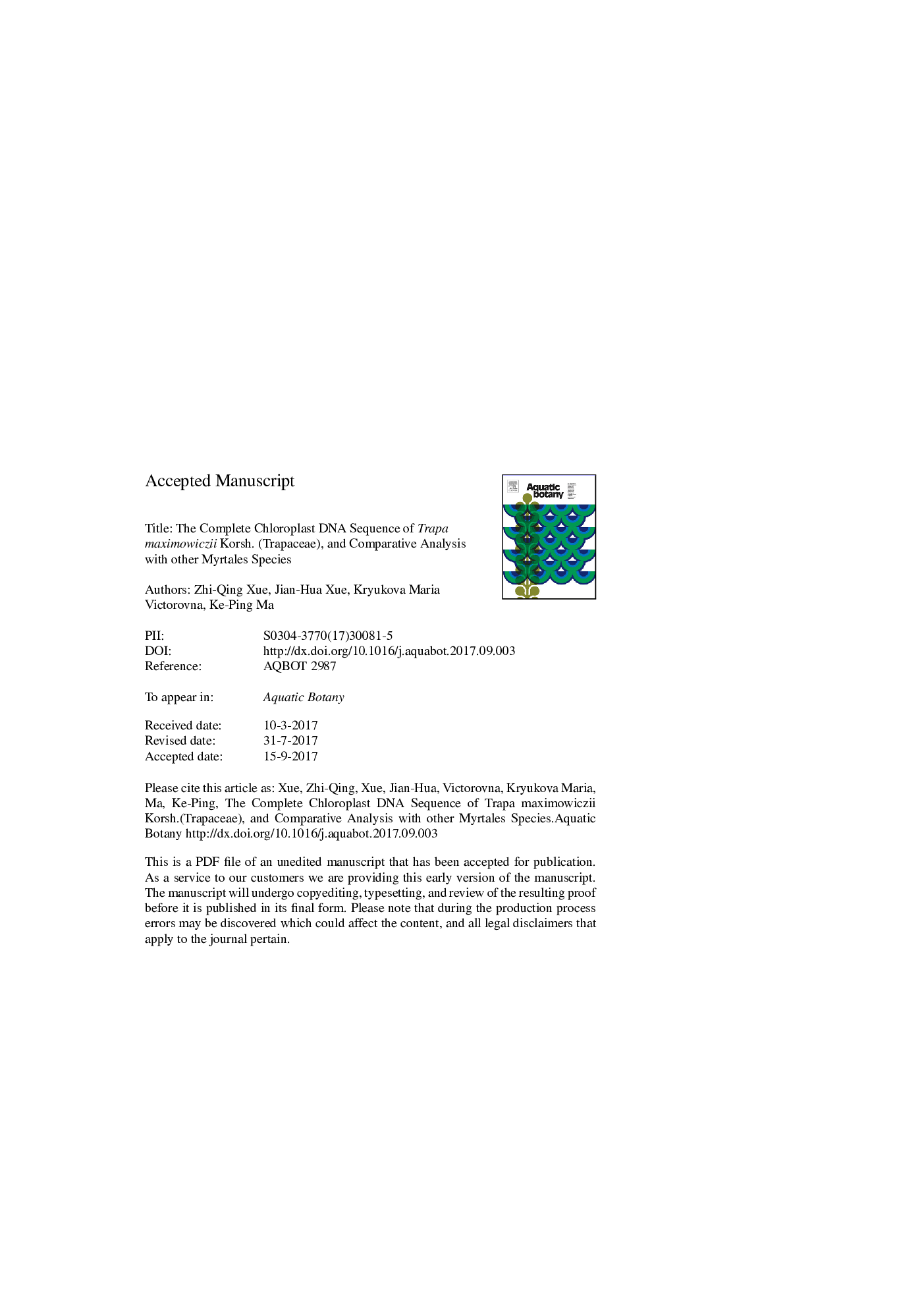| Article ID | Journal | Published Year | Pages | File Type |
|---|---|---|---|---|
| 5764030 | Aquatic Botany | 2017 | 30 Pages |
Abstract
Trapaceae is an aquatic plant family widely distributed in and around Asia, Europe, and Africa. The fruits, while rich in starch and protein, also have edible and medicinal value. The first complete chloroplast genome in Trapaceae (Trapa maximowiczii Korsh.) has been determined. The genome size is 155,577Â bp, which includes two inverted repeats (IR) of 24,388Â bp, one large single copy (LSC) of 88,528Â bp, and one small single copy (SSC) of 18,273Â bp. The whole GC content is 36.4%. There are 111 genes in this genome, and 17 are duplicated in the IR. Fourteen genes have one intron, and rps12 and clpP have two introns. The SSR and repeat analysis revealed 61 SSRs, 22 repeat units, and 16 palindromic structures in this chloroplast genome. In a comparative analysis with five species, the detailed boundaries were compared between IR and LSC/SSC that are supposed to be closely related to T. maximowiczii and Lagerstroemia fauriei; gene infA has been lost only in T. maximowiczii and L. fauriei. The mVISTA analysis revealed several variable regions in the Myrtales genome including loci ycf1, ycf2, accD and rpl32-trnL, which can be useful in phylogenetic studies. The phylogenetic position of T. maximowiczii in the whole genome, LSC, SSC, and IR regions has been confirmed using 8 taxa from Myrtales, which is in agreement with other reports that place T. maximowiczii in the same clade as that of Lythraceae. These data represent valuable genetic resources for future research on Trapa population genetics.
Related Topics
Life Sciences
Agricultural and Biological Sciences
Aquatic Science
Authors
Zhi-Qing Xue, Jian-Hua Xue, Kryukova Maria Victorovna, Ke-Ping Ma,
